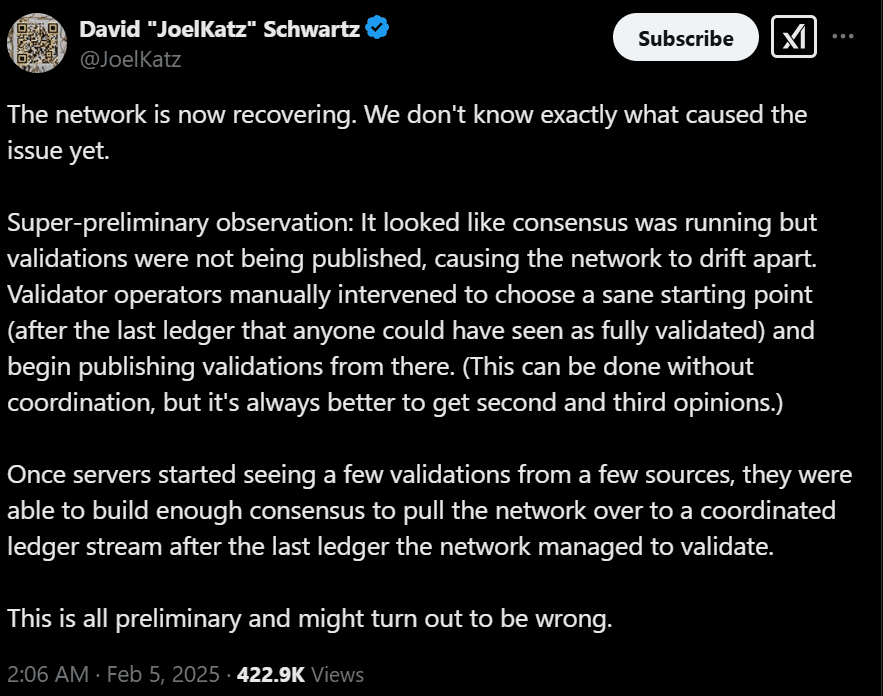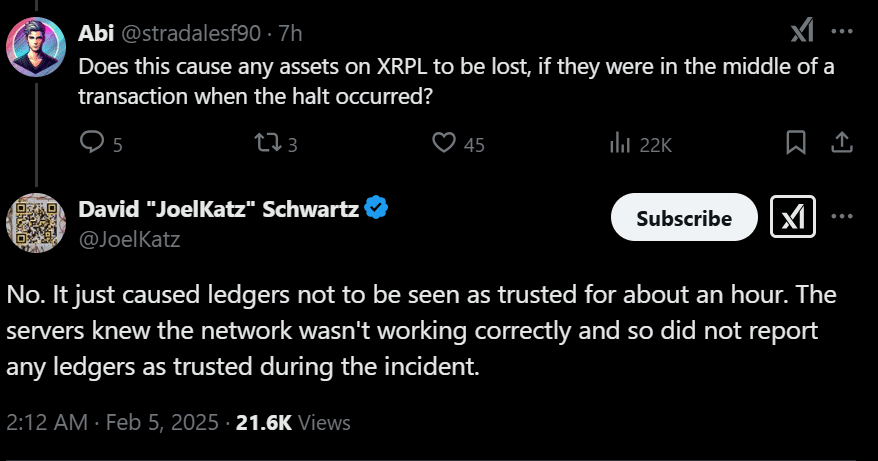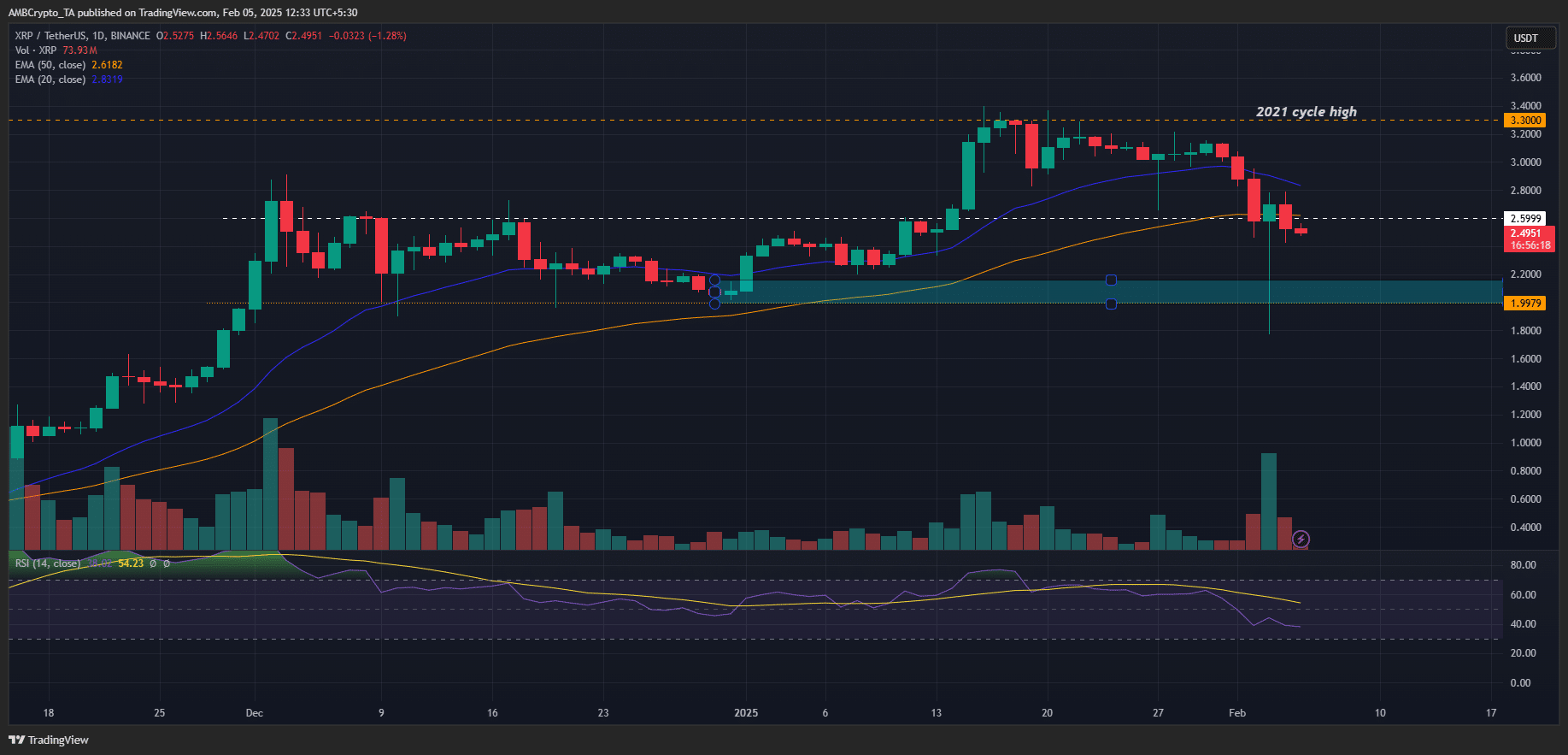-
The recent outage of the XRP Ledger has cast a shadow over XRP’s price and investor sentiment, triggering discussions about its long-term viability.
-
This disruption, which lasted for approximately one hour on February 5, raised questions about the reliability of Ripple’s blockchain technology.
-
David Schwartz, Ripple’s CTO, emphasized that the network’s ability to “self-heal” played a crucial role in restoring operations.
XRP Ledger’s recent outage caused market jitters, but Ripple’s CTO claims the network’s self-healing capabilities mitigated the impact on transactions.
XRP Ledger Network Interruption and Recovery
The XRP Ledger experienced a significant operational hiccup on February 5, resulting in an outage that lasted approximately 64 minutes. This incident raised alarms among investors and users, who questioned the reliability of the blockchain. Ripple’s CEO, David Schwartz, indicated that the cause of the disruption was a ‘network drift,’ which occurred when validations failed to publish even when consensus was running properly. This failure led to a temporary halt in transaction processing, causing an uptick in user frustration.
Technical Insights from the Outage
In a detailed account of the situation, Schwartz noted that intervention from a single validator played a role in restoring the network. He stated, “It looks like, as far as we can tell, only one validator operator manually intervened. It’s still not entirely clear if that solved the problem or if the network self-healed.” This commentary highlights the resilience of the XRP Ledger, which Schwartz described as capable of finding a viable starting point to continue block production through the supermajority consensus mechanism.

Source: X
Impact on Wallet Services and Market Sentiment
The outage had immediate practical implications, notably affecting wallet services associated with the network. Xaman Wallet, a comparable service to Solana’s Phantom wallet, reported disrupted transactions during the outage. Despite these transaction failures, Schwartz reassured users that no assets were compromised, indicating a certain level of resilience in XRP’s infrastructure.

Source: X
Some analysts voiced concern over the network’s performance capabilities following the disruption. Market commentator MartyParty expressed doubts about the sustainability of XRP, stating, “$XRP goes down at 20 tps. I don’t think $XRP will work out.” This criticism reflects a broader skepticism regarding the XRP token amidst its recent struggles to maintain value in an unstable market.
Market Dynamics and Price Movements
During the trading hours on February 4, XRP experienced a notable price decline, dropping approximately 6%. At the time of this writing, XRP remained under increased pressure, hovering below the critical $2.5 mark and failing to maintain key moving averages on higher time frames. This bearish environment has intensified skepticism as the market awaited upcoming economic reports, such as the US Jobs report, expected on February 7.

Source: XRP/USDT, TradingView
Significantly, Bitcoin also faced resistance at the $100K mark, which further dampened the market momentum for XRP, influencing its ongoing price action negatively.
Conclusion
The recent interruption of the XRP Ledger serves as a pivotal moment for both Ripple and its investor base. While the capacity for the network to “self-heal” illustrates its inherent resilience, sustained criticism and recent price trends highlight potential vulnerabilities within the XRP ecosystem. As the market responds to broader economic conditions, including forthcoming employment data, stakeholders will closely monitor the stability and performance of the XRP Ledger.
